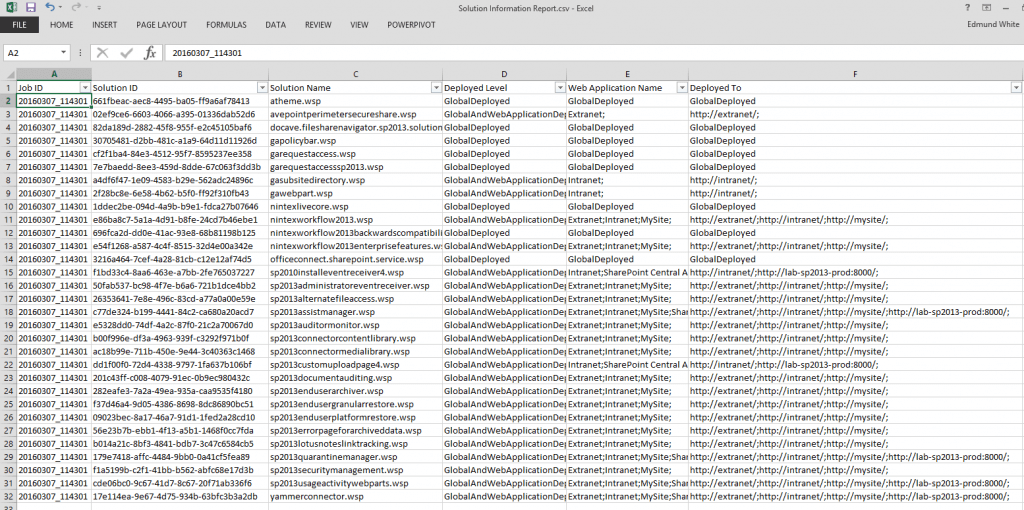There are many reasons to move to the Microsoft Cloud and carry out an Office 365 migration. Whether you’re looking for better mobility, easier sharing, more affordable and scalable data storage, or simply want access to Microsoft’s latest features for productivity and collaboration before they’re available on premises – Office 365 is a great place to be.
An Office 365 migration is an exciting project that holds a lot of promise, but you want to make sure you start on the right foot. To realize all of the potential that Office 365 and SharePoint Online hold for your organization, you first need to make sure that the data you are migrating is actually useful and able to live in the cloud.
The Challenges (and Cost) Behind What You Don’t Know
The reasons for migrating only useful data to your new Office 365 are entirely pragmatic. Moving redundant, obsolete, and trivial (ROT) data from legacy systems that users no longer need to Office 365 is going to make adoption of the new system that much harder. An Office 365 migration is your opportunity to get things right from the start, and understanding what you have is the best way to do that. A system that is better organized and holds only relevant information is going to be much more helpful to users than the one they’re about to leave behind. As an example of how an organization can improve Office 365 adoption by migrating content selectively, check out this case study on Coeur d’Alene Casino Resort Hotel (CCRH).
Although storage in the cloud is infinitely scalable and Microsoft offers unlimited OneDrive for Business storage for some enterprise subscriptions, you will need to pay for SharePoint Online storage that goes beyond the threshold in your Office 365 plan. It may be less expensive than storing data on premises in many cases, but cloud storage is not free. A bit of work up front can help you achieve cost savings in the cloud in the future.
Most importantly, however, you need to confirm that you’re not moving data to Office 365 that shouldn’t live in the cloud. With native Office 365 features like external sharing and Delve easily available to users, you may be opening yourself to increased risk if the wrong information makes its way to the cloud and if the right controls are not in place. With the average cost of a data breach now at an all-time high of $3.79 million, it is more important than ever to take a risk-based approach to migrating your data.
Gartner also makes a great case for pre-migration preparedness:
“For organizations with large, chaotic SharePoint environments (which is the majority of the clients Gartner speaks to about migration), the largest part of the migration effort consists of activities that aren’t strictly due to the migration. […] Content cleanup includes reorganizing content, adding better metadata, improving the information architecture (for example, straightening out the navigation structure), applying consistent templates, and removing ROT (redundant, outdated, or trivial content). […] Process cleanup includes revisiting SharePoint governance – implementing processes for requesting new sites, improving reporting procedures and implementing a formal help desk. These are all time-consuming tasks that organizations contemplate as part of (or better yet, before) a migration to get a fresh start with some better habits and decrease the amount of junk moved to the new environment.”
For these reasons, as you prepare for your Office 365 migration, you should be looking at existing content based on business value and risk to the organization instead of simply data volume.
Three Steps for Office 365 Migration Preparation
In order to do effectively prepare your data for migration, there are three distinct steps to take:
- Data discovery
- Data analysis
- Data classification
Data discovery gives insight into potential hidden constraints – such as capacity, bandwidth or project timing – that you will need to understand as you plan out your migration. It also is the first step to creating a cleaner, less redundant data volume. This will ultimately make your Office 365 environment much easier to maintain, back up, manage, restore, or archive. Pre-migration is an ideal time for this work.
Organizations often identify a large amount of policy violations, sensitive information, or unidentified risk across content that is no longer accessed or needed by anyone. Data analysis is a way to find these data silos that are outside of the standard business activity.
Finally, classifying documents helps optimize data storage costs and shorten the overall migration process. Not all data is of equal importance, so a cross-functional team should determine which data should be migrated, in what order it should be migrated, as well as define and apply different policies on how the data should be managed in future. You will also need to classify content according to what can go to the cloud and what needs to stay on premises based on any regulations that are applicable to your organization – such as data sovereignty laws or the European Union General Data Protection Regulation (GDPR).
But wait, all of this sounds hard and time consuming. Wouldn’t it be way faster and cheaper to just pick up your data and move it into the new environment? It may seem that way now, but it’s not worth the headaches you, your users, and your organization could experience after your Office 365 migration is complete.
Luckily, AvePoint has solutions that provide pre-migration functionality to find and address potential migration pitfalls.
Data Discovery
The AvePoint Discovery Tool is designed to make the discovery phase of your Office 365 migration easier by helping you understand the customizations, workflows, information architecture, and amount of content within your source environment. That way you can determine whether your current migration project goals are achievable or if they need to be adjusted before you begin the migration process. What’s even better? It’s available now as a free download!
I used the AvePoint Discovery Tool against my SharePoint environment, and in 20 minutes I was able to see:
- Total size and document count
- Documents with file types that are not supported in Office 365
- Inventory all workflows
- Full details on all look-up columns
- Inventory of custom master pages, templates and features
All of this information is valuable to have a complete picture of my source environment so I can plan how to handle these specifics. Determining whether a business solution built on workflows and templates needs to be moved or retired is a necessary pre-migration step.
The Discovery Tool Summary Report also gives me warnings on specific content in my source environment that I can review ahead of time – allowing me to plan smarter ahead of my Office 365 migration.

Further investigation reveals all solutions deployed on my farm, which is helpful for me to analyze since I can’t bring any of them with me to Office 365.

Data Analysis and Classification
AvePoint Compliance Guardian enables administrators to automatically scan and classify content based on out-of-the-box and customizable rules. Before moving to Office 365, you must first understand the data that you hold. This, along with a knowledge of internal company policies and external regulatory requirements, allows you to take a risk-based approach to migrating and ultimately storing data appropriately in the cloud.
Compliance Guardian’s data classification and protection framework incorporates regulatory and organization-specific governance and compliance policies as well as implements an automated approach to data discovery, tagging, and classification. This brings this power and simplicity to the world of data protection and pre-migration preparedness, with user-assisted tagging and automated classification.
Compliance Guardian can identify and appropriately tag and classify documents (based on location and regional as well as industry-specific data sovereignty requirements). With proper data classification in place, I can more easily filter content and migrate it intelligently with a tool like DocAve Migrator. I can also better prepare myself to properly structure the content in the destination environment and address any compliance concerns around moving (or not moving) sensitive content to Office 365.

For customers who want to be even more hands off with their pre-migration process, AvePoint Client Services offers a full service ROT analysis and resolution project for pre-migration customers. They can generate reports and take action to clean up the source environment – leaving you ready to migrate.
Avoid the Data Bulldozer Approach
Migration software can be a bulldozer – a fast, bulk way to push data volume to Office 365. Without pre-migration preparedness, you still get the new features of Office 365, but it won’t offer the best user experience and may expose your business to risk. Two major concerns with any migration are timeline (because of business disruption opportunity cost) and the direct cost of moving the data and storage. ROT data adds significantly to both concerns. Directly reducing and organizing your source environment content addresses both concerns and makes SharePoint Online easier to use.
What’s Next?
Need more advice to ensure your Office 365 migration is a success? For our strategy guide to unlocking the full potential of Office 365, be sure to check out AvePoint’s Cloud Arcade. You can also learn more about the phases of an Office 365 migration by registering for our upcoming webinar, AvePoint’s Cloud Arcade Presents: Optimizing Your Office 365 Migration, airing at 2:00PM ET on Wednesday, April 6.





